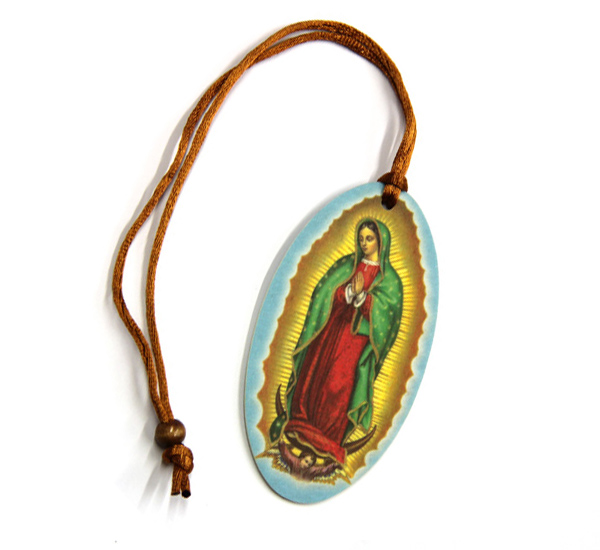 |
| "Pulling the Heartstrings", 2004 |
Religious iconography is appealing for a lot of reasons: it's dense with symbolism, highly recognizable, and it taps into a lot of abstract things that are otherwise hard to express. I'm not an anthropologist or anything, but from what I understand, the very earliest examples of art (such as at Lascaux) were associated with the kind of magic and mysticism that eventually became religion as we understand it. So there is a long history of using art as a spiritual tool. And I can dig that, while being bothered by, too.
Art taps into our capacity for experiencing that which we don't really understand; and while it can be used as a device for exploration and discovery, it has far more often been one for propaganda. Over the years, artists have created a rich visual language to reference many important social and philosophical concepts. Much of that language is religious. And I have typically had no problem co-opting that language in my work when I wanted to reference concepts such as guilt, transcendence, or sacrifice. As a result, I actually have a lot of works with religious references in them, such that it's kind of a big theme in my work. I didn't plan that, and was actually quite unsettled about it when I realized it for the first time.
 |
| "Good News From the Swamp", 2007 |
I mentioned that religious imagery is dense. One side effect of using it is that it has a lot of baggage. I was using it in nonreligious contexts, but not overtly critical ones. I realized that, looking back on my work as a body, it would be possible to interpret the religious elements as much more, er, earnest, than I ever intended them to be. I've been guilty of postmodern-style appropriation, which I always assumed would be seen as lightly ironic, but I'm not sure if that's how it really comes off. So now I am conflicted. I will have to deal with the issue head-on in my future work.
I'm interested in what other people think about this topic. How do you feel about using religious symbols in nonreligous contexts? Is it a form of reclaiming? Is it a short cut? Should I, as an atheist, worry about the way this comes up in my own work?

Religion is mythology so powerful that it has been mistaken as as history, so it is no surprise that its images have a powerful hold on the imagination, even of atheists. I think it is because mytho-religious iconography points to the truth that it can never contain, and somehow we sense this, the way we know a good story. Using it in non-religious art probably makes the most sense if it is clear that it is not about beliefs, because most viewers will interpret it literally.
ReplyDelete